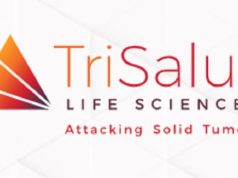
Interventional radiology is regularly characterised as being “a hotbed of innovation”, but the first study to directly evaluate the level of agreement between disclosed financial relationships and open payment data for top-cited image-guided procedures in the USA lays bare that 97% of the studied authors failed to disclose at least one active financial relationship. Importantly, declaring an interest does not equate to resolving potential bias, note authors Lee J Hsieh (University of California San Diego, San Diego, USA) and Mina S Makary (The Ohio State University Medical Center, Columbus, USA). Their research, published online ahead of print in October 2021 in the Journal of Vascular and Interventional Radiology also reignites the debate around how to weed out bias without bedevilling and stifling innovation. Interventional News speaks to the authors of the study to drill down on its findings and implications.
How should the findings of this study influence interventional radiologists to scrutinise published data?
The significance of this work is that it is the first study which directly evaluates the prevalence of conflict of interest (COI) disclosures in US-based interventional radiology (IR) research while evaluating the level of agreement between disclosed financial relationships and open payment data for top-cited image-guided procedure research. Findings from this work should raise the attention of interventional radiologists evaluating published data to this often invisible factor that creates a risk of bias. For example, studies have shown that those with industry sponsorships are more likely to have pro-industry conclusions, and others may publish conclusions inconsistent with the study results. Industry sponsorships may also erode academic freedom and influence research agendas, inadvertently suppressing research that does not further industry’s objectives in science or policy. This potential for bias is the reason expert consensus has emphasised the importance of COI disclosure to help mitigate any potential bias and support data integrity.
What were the leading results from your data?
One of the most interesting findings was that among the 396 authors of 100 US-based, top-cited image-guided procedure publications, 97% failed to disclose at least one active financial relationship, with an average of US$57,937 in undisclosed payments per publication. For comparison, previous studies in other areas of healthcare have found discrepancies in 43–69% of publications, while still others have reported a median rate as high as 81%. Together these trends suggest that conflicts of interest are prevalent in IR, like other areas of healthcare research, and conflicts of interest in top-cited image-guided procedure research are often underreported.
A 30% positive COI rate that climbs to 50% in standards of practice and device-related publications—what needs to be done to help recast these numbers?
To improve disclosure, authors and organisations have advocated for further development and use of open disclosure databases, building upon the successful implementation of ClinicalTrials.gov. Many have noted that relying primarily on self-disclosure is limited and that people may overlook potential biases in themselves that they would otherwise perceive in others. Even authors who are transparent with their COIs may falsely equate disclosure with resolution, assuming that once a potential bias is disclosed, no further action is required. As such, the Committee on Publication Ethics described the importance of a shared responsibility between authors to disclose as well as journal editors to screen for and minimise potential bias. Accurate and complete disclosures may improve author transparency and public trust, but a more comprehensive approach involving public effort, policy change, and institutional support may be needed to address the underlying issues of COIs.
What are the limitations of this dataset? How globally applicable is it?
This work had several limitations. The prevalence of positive COIs in IR was estimated from a single volume of a single IR journal, which reflects only a fraction of a broader body of IR literature. COI disclosures may vary over time and across different journals. The assessment of agreement between disclosed financial relationships and open payment data was limited to studies published after the enactment of the Sunshine Act in August 2013. Since non-domestic financial data are difficult to obtain, only those of US authors were analysed. These all limit the generalisability and external validity of the results, particularly in the global arena.
How do you propose preparing a change?
While relationships between clinicians and industry can have many positive effects, these relationships nevertheless do create a risk of bias that must be mitigated to support the integrity of research. Our collective efforts are necessary to better understand how best to encourage disclosure and reduce bias without stifling innovation, a hallmark of our specialty.













